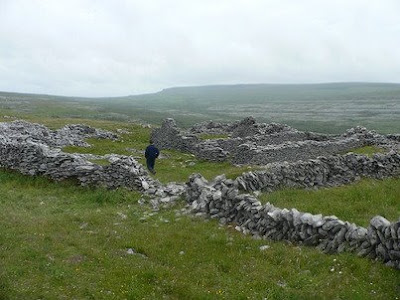Every year for the last 5 centuries an east Clare village called the Crosses of Spancil Hill has held a big horse fair. The Celts were fabulous horsemen, and for centuries the best horses in all of Europe were bought and traded at the Spancil Hill horse fair. The fair has traditionally always been held on June 23, no matter what day of the week that falls on. This year the fair was on a Monday, but our landlord Aide urged us to take a couple hours out of our work day to check it out. Aiden has horses, and he used to race (and win, judging by the number of trophies and blue ribbons in his house) until a bad fall on his head put him into a coma for a month. He luckily came out of it with no lasting damage, but it put an end to his racing career. He still rides for pleasure. Slowly. And with a helmet on.
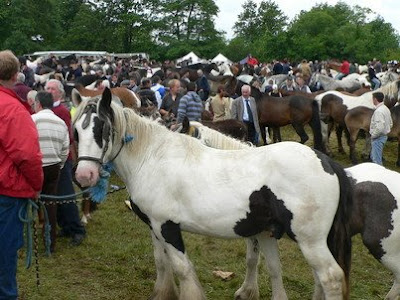
The Spancillhill fair green was a scene of quiet chaos. Hundreds of people, mostly men, standing around holding the reins of one or more horses. We had to thread our way between and behind the horses, which was a bit nerve-wracking since we'd been warned that every year some people get kicked by skittish ones.
Horses have been cross-bred and interbred for so long here that there's a huge diversity of size and shapes.
We saw big-ass horses........

tiny knee-high ponies..........

huge muscled draft horses bred for working.....
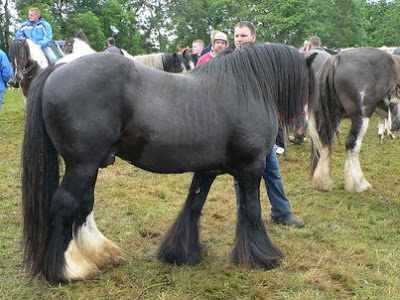
sleek race horses.......
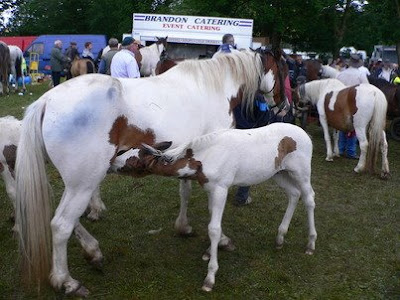
long-haired hippie horses with beards........
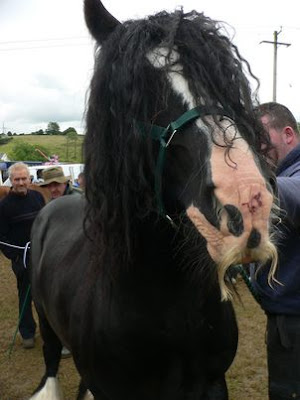
donkeys and burros........
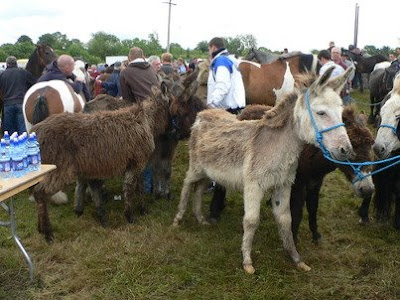
and the colorful characters who were there to buy and sell.
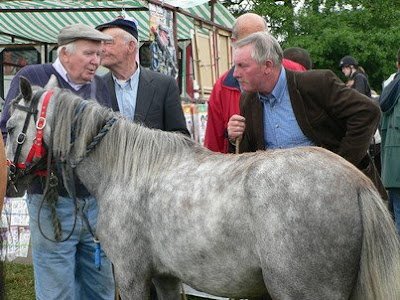
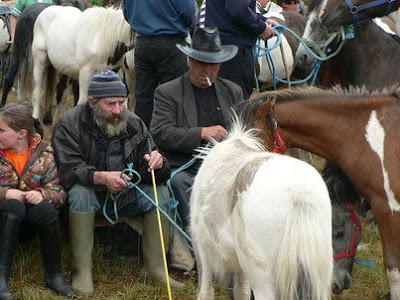
There was also a great selection of farm DVDs for sale with sizzling titles like "Combines Galore", "Silage Machinery at Work" and that all-time blockbuster "John Deere Tractors in Action". Bill had to elbow his way through the crowd around the display rack in order to take this picture.
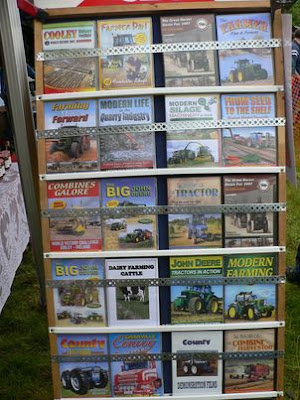
The Old Yellers

The Old Yellers at our thatched cottage
We went out to see an American band called The Old Yellers at a pub in Ennis - they play excellent original roots/country/rock. It was really great to see some live American music after all the diddledee-di-dee-o trad music we hear at sessions. After the show I asked the band where they were staying for the night, and it turned out they had a long drive ahead of them up to Galway where they would be sleeping on the floor of a friend. I asked if they wanted to stay in our thatched cottage instead and drive on to Galway the next day, and they were psyched! They really liked our cool little cottage, and we were happy to host up with a yankee breakfast of pancakes and maple syrup the next morning.
After brunch and a garden tour, we went with the guys to see the Cliffs of Moher in the mist and cloud, followed by a brief stop at the edge of the Burren for a picnic. At Ballyvaughan they headed on to their gig in Galway while Bill and I went further into the Burren to do some botanizing.
We had a great time hanging out with the Old Yellers and told them to plan on staying with us when they tour Ireland in November. We've always been treated so hospitably by the Irish that it was nice to have the opportunity to extend that gracious Irish hospitality to other travellers.Check out their website at www.myspace.com/theoldyellers.
Picnic spot at the edge of the Burren near Ballyvaughan
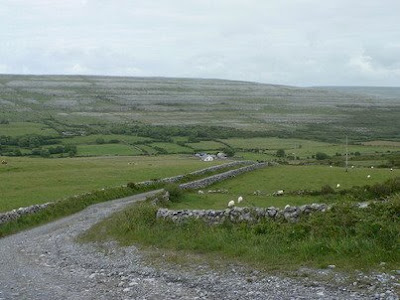
Wildflowers of the Burren
After we departed from the Old Yellers in Ballyvaughan, Bill and I went deeper into the Burren to check out the unique wildflowers that grow in grassy patches on the bare limestone rock. This is the best time of year to see orchids - around 25 species of small orchids are native to the Burren, and most of them bloom in May and June. We found nine species of orchids in a meadow that afternoon.
Spotted Orchid
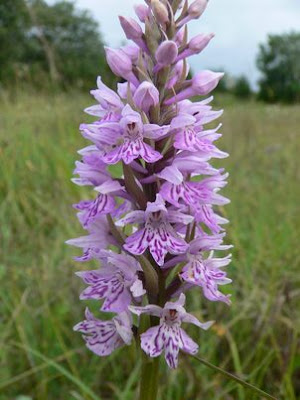
Spotted Orchid - pale variety
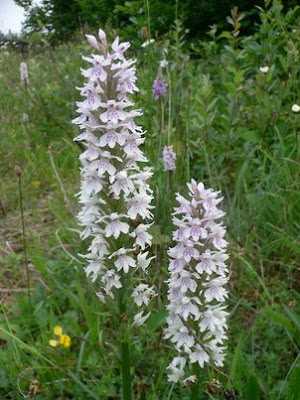
Bee Orchid
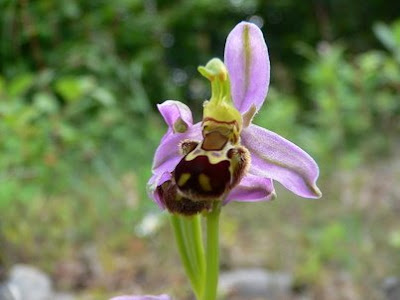
Frog Orchid

Butterfly Orchid
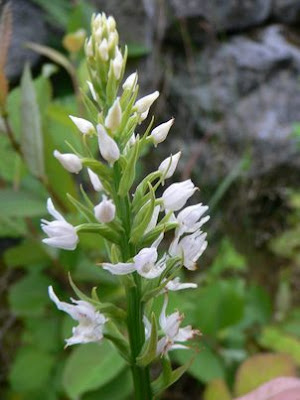
Pyramidal Orchid

Dense Flowered Orchid
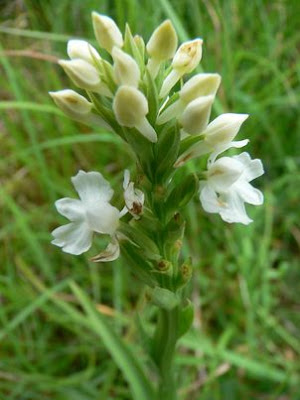
Frog Orchid
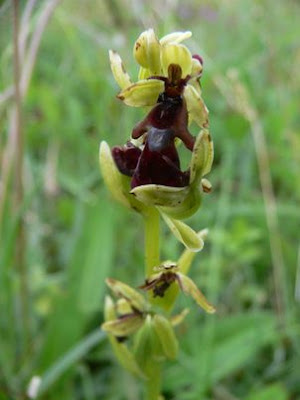
O'Kelly's Orchid (white form of Spotted Orchid)
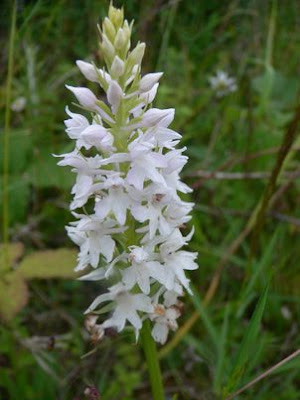
Botanists love the Burren because the plants there are a bit of a mystery. When the earth was in the ice age the Burren was inhabited by alpine plants. When the glaciers retreated and the earth warmed, Mediterranean plants moved in but the alpine plants remain. This is probably the only place in the world where you can view Mediterranean plants growing side by side with alpine species that are normally found at high altitudes. The Burren is just above sea level and it rarely freezes due to all the heat-retaining limestone and proximity to warm ocean currents, so it's a mystery why the alpine plants thrive here. The limestone also causes the flowers to have extremely colorful flowers, and because the soil is so shallow the tiny plants don't have to deal with competition from larger plants.
Cranesbill
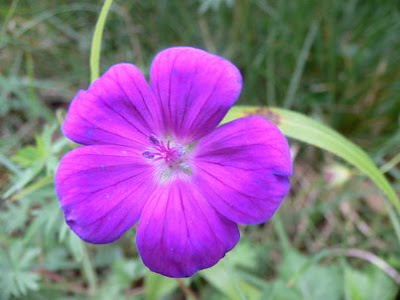
Vetch

Crimson Clover

Burren meadow with orchids,daisies,clover and yellow rattle
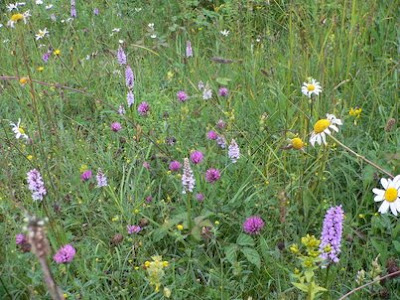
Antiquities of the Burren
While searching for wildflowers, we stopped at a couple of ancient sites. Because of the very mild climate and good drainage of the limestone (which made for good grazing lands in winter), the Burren was densely inhabited a couple of thousand years ago. It was a lot greener then, and the bare limestone "pavements" you see now are due to prehistoric over-farming which caused soil erosion. Early peoples built lots of ringforts and giant tombs, called dolmens, which can still be found scattered throughout the Burren hills.
This is Poulnabrone, the most famous dolmen in the Burren. It's massive - archeologists have estimated that the capstone alone weighs three tons. The remains of several dozen people were found within, buried here around 3,000 B.C.
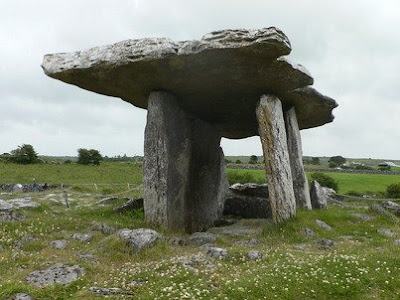
Here's Bill approaching the ruins of a shebeen built within a ringfort. A shebeen is a speakeasy - probably built in the 18th or 19th century when the Irish were forbidden by the English from hanging out in pubs together (and fomenting revolution while drinking their pints). The Irish built shebeens in out-of-the way locations, and this one, hidden within the old walls of a Celtic ringfort, was probably hard to spot.
